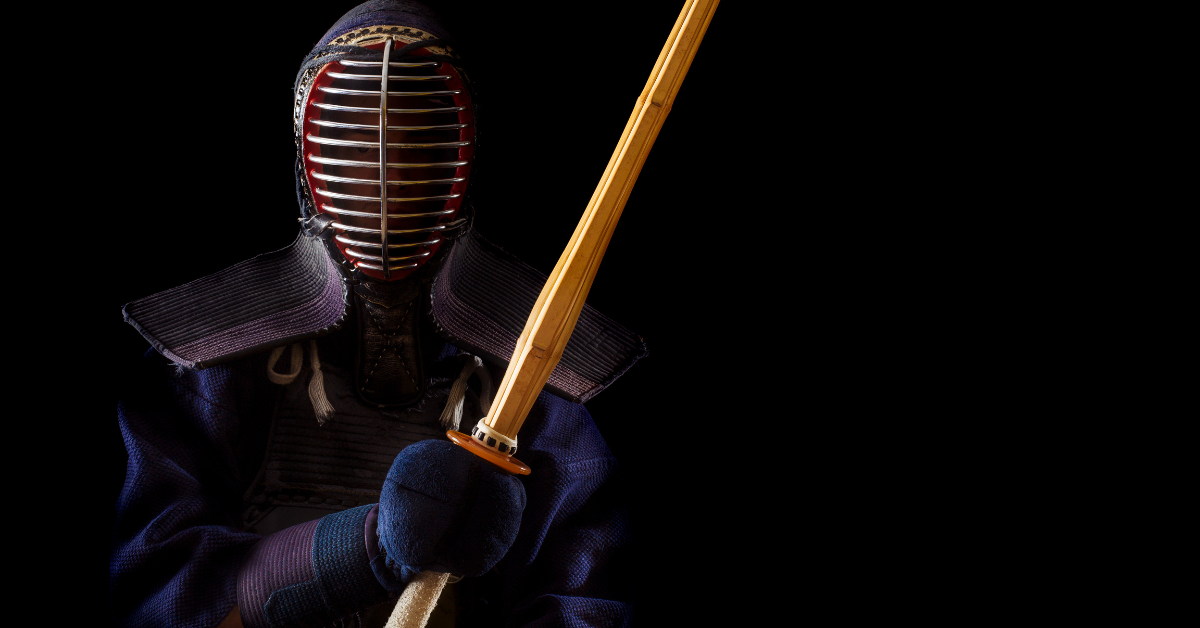Kendo is a traditional Japanese martial art that embodies the spirit and culture of Japan. Through training and matches with a bamboo sword, practitioners develop not only skill but also courtesy, focus, and mental discipline.
Meaning and Origins of Kendo
Kendo literally means “the way of the sword”, referring to a method of mental and technical training through the use of the sword. Originating from the swordsmanship practiced by Japanese samurai, it was systematized during the Meiji era with the introduction of protective gear and bamboo swords for safety. This transformation was aimed at enhancing safety and promoting wider practice, and today kendo uniquely combines both competitive and spiritual elements.
Kendo is not merely a fighting sport; it is also a cultural discipline that values courtesy, self-control, and concentration. The bows performed before and after matches and the etiquette maintained during practice reflect the spirit of bushido.
Table: Origins and Evolution of Kendo
| Era | Features | Main Changes |
|---|---|---|
| Edo period | Flourishing of kenjutsu | Kata practice using wooden or live swords |
| Meiji era | Unified under name Kendo | Spread of protective gear and bamboo swords |
| Showa era | Development as a sport | Rule establishment, national tournaments |
| Modern day | Global expansion | Formation of overseas organizations |
Kendo Equipment and Gear
In kendo, practitioners wear full protective gear to prevent injury. The gear consists of men, dō, kote, and tare, which protect the head, torso, wrists, and waist area respectively. The shinai is usually made by combining four slats of bamboo, with its length and weight regulated depending on the practitioner’s age and rank.
Table: Main Kendo Equipment
| Equipment | Description |
|---|---|
| Men | Protects the face and throat |
| Dō | Guards the chest and abdomen |
| Kote | Covers the wrists and forearms |
| Tare | Protects the waist and upper thighs |
| Shinai | Bamboo practice sword for striking |
The equipment not only provides safety but is also designed for freedom of movement during matches and practice. Proper wearing of the gear is considered part of etiquette, and mental focus begins from the preparation stage before training.
Basic Match Rules
A standard kendo match follows a “best of three points” format, where the first to score two valid strikes is the winner. A valid strike (yūkō datotsu) requires correct posture, proper blade angle, strong spirit (kiai), and striking within the right distance (maai). Three referees judge the match using flags to signal points.
Table: Valid Target Areas
| Area | Call |
|---|---|
| Head | Men |
| Wrist | Kote |
| Torso | Dō |
| Throat | Tsuki |
Matches usually have a time limit (commonly five minutes), and in case of a draw, there may be overtime or a deciding match.
Training Methods and Ranking System
Kendo training is divided into basic drills, applied techniques, and match-style practice. Beginners focus on fundamental movements, while advanced practitioners work on tactical judgment and precision. Ranking starts from first dan and goes up to eighth dan. Promotion exams assess not only technical skill but also proper etiquette.
Table: Dan Ranks and Requirements
| Rank | Requirements |
|---|---|
| 1st Dan | Mastery of basic techniques |
| 2nd Dan | Applied skills and match experience |
| 3rd+ | Advanced techniques and leadership |
| 8th Dan | Exceptional character and skill |
Global Spread of Kendo
Although kendo originated in Japan, it is now practiced in over 50 countries, with international tournaments held regularly. Overseas practitioners are often drawn to both its cultural and spiritual aspects, and dojos are increasingly common outside Japan. In Europe and the US, some schools even incorporate kendo into their physical education programs.
Table: Global Kendo Trends
| Region | Features |
|---|---|
| Asia | Strong cultural exchange with Japan |
| Europe | Active tournaments and training camps |
| North America | Inclusion in school education |
| South America | Supported by Japanese communities |
Spiritual Value of Kendo
The ultimate goal of kendo is “to cultivate the mind and body and perfect one’s character”. More important than winning or losing is showing respect to both your opponent and yourself, and valuing the daily accumulation of practice. The patience and focus developed through kendo can benefit everyday life and work. Overseas practitioners also find deep meaning in this philosophy, seeing kendo as more than just a sport.
Conclusion
Kendo is a martial art deeply rooted in Japanese history and culture, offering a safe and structured way to train both mind and body through bamboo sword practice. It is valued not just as a sport but as a lifelong discipline that fosters courtesy, concentration, and perseverance.
Kendo also serves as an international bridge, with tournaments and training camps held around the world. Wearing the men removes barriers of nationality and language, allowing practitioners to share common rules and spirit. Benefits such as improved posture, enhanced focus, and a sense of gratitude naturally develop with continued training.
For those considering starting kendo, visiting a local dojo for observation or a trial lesson is a good first step. Kendo begins and ends with respect, offering lessons not only in technique but also in how to live as a person. The longer you continue, the more you will appreciate its depth and richness.






